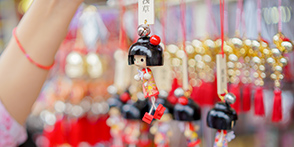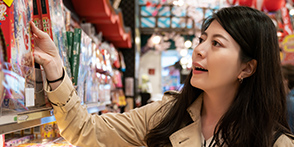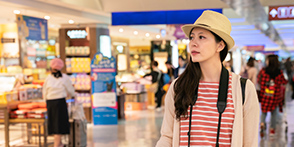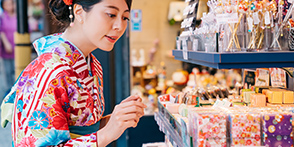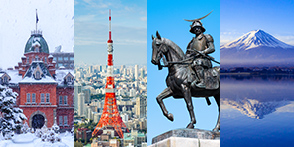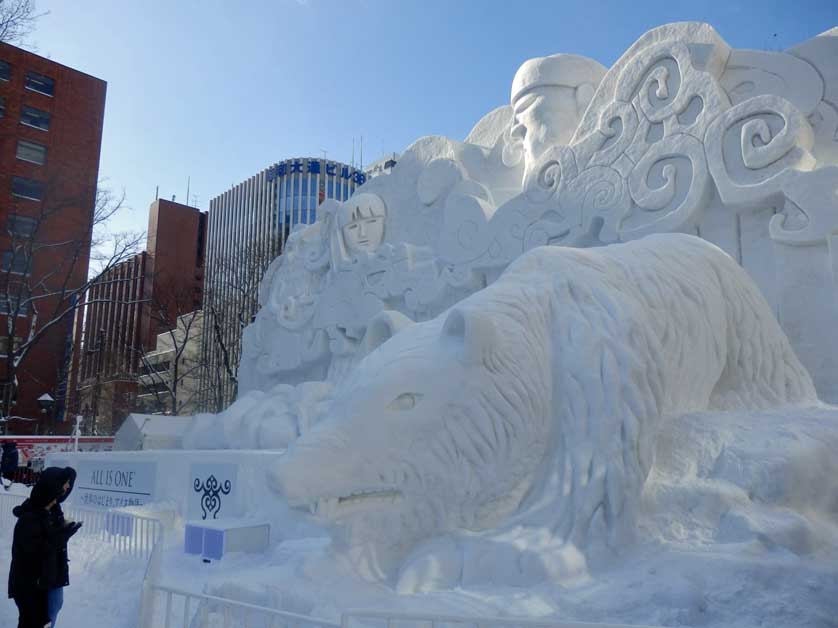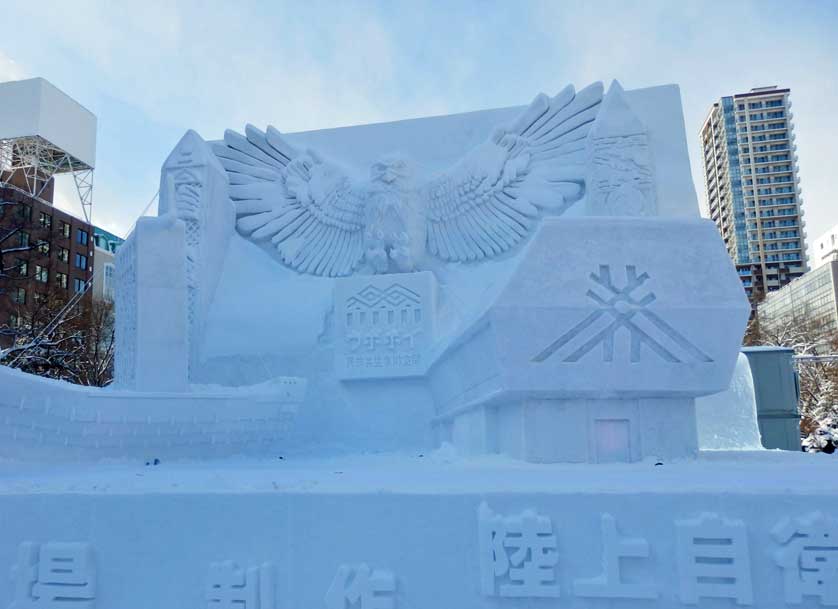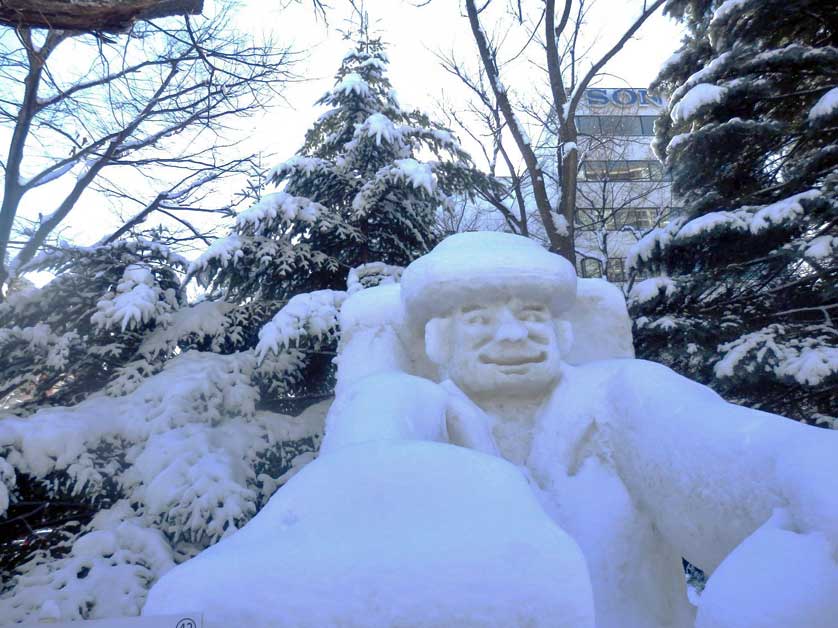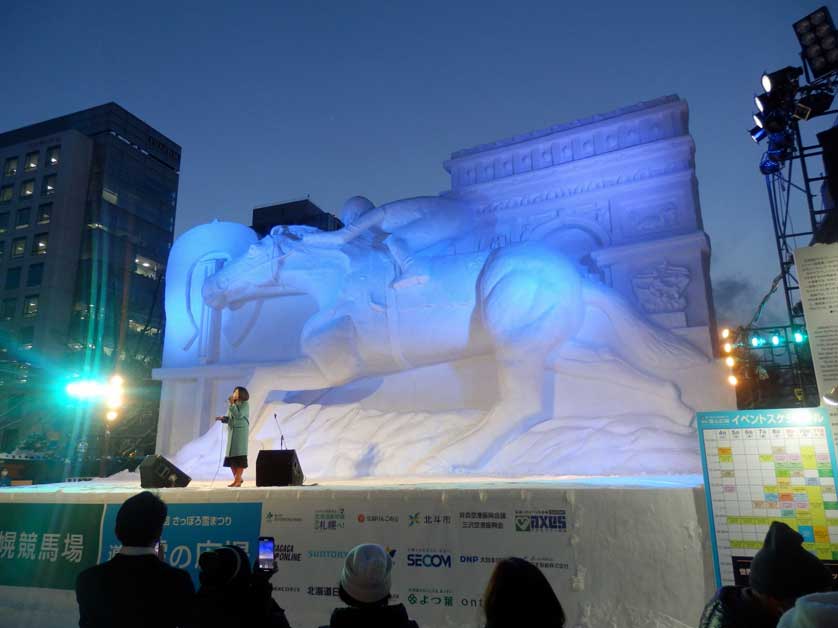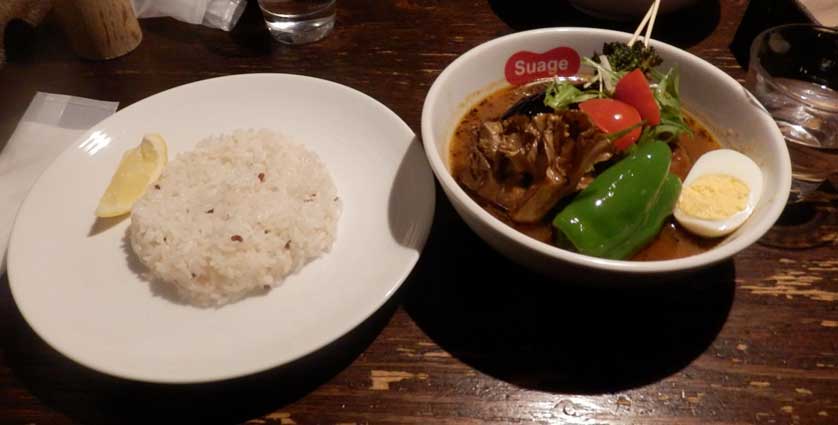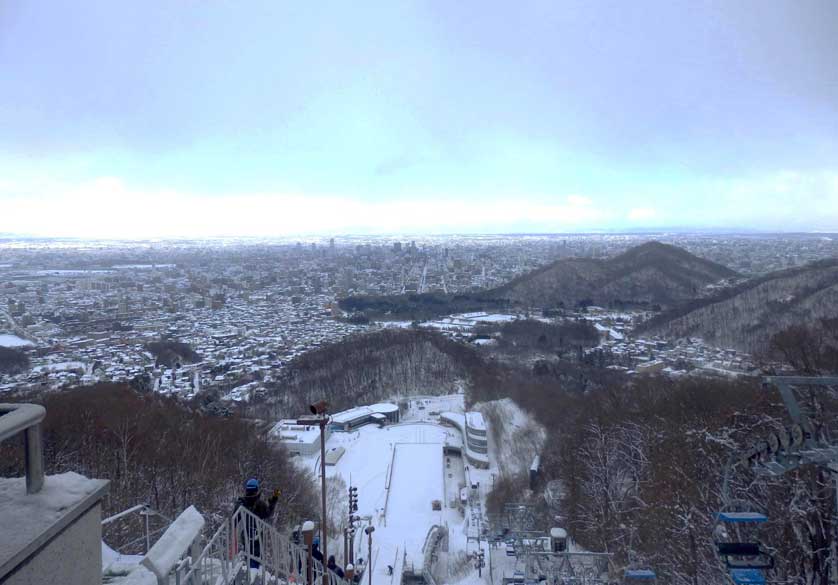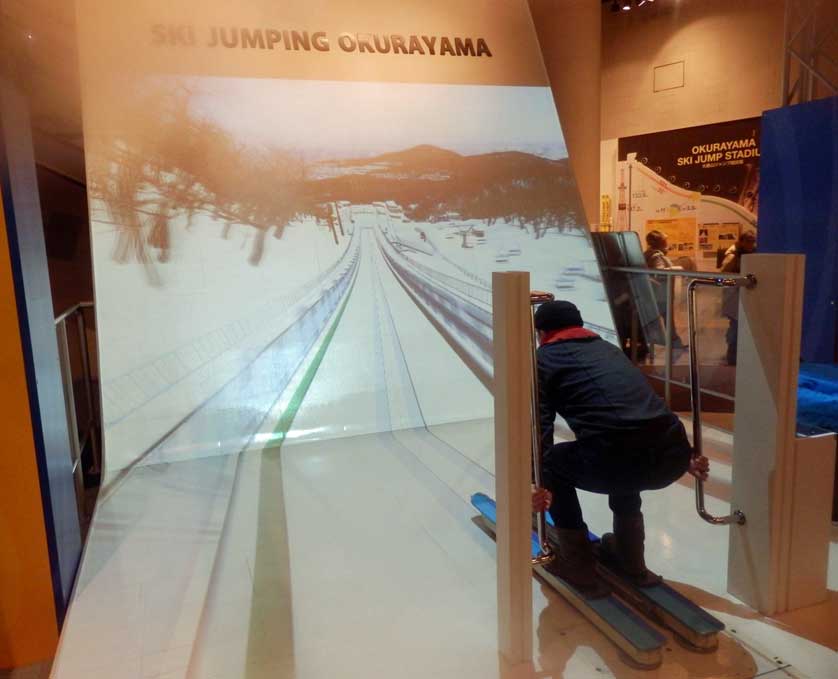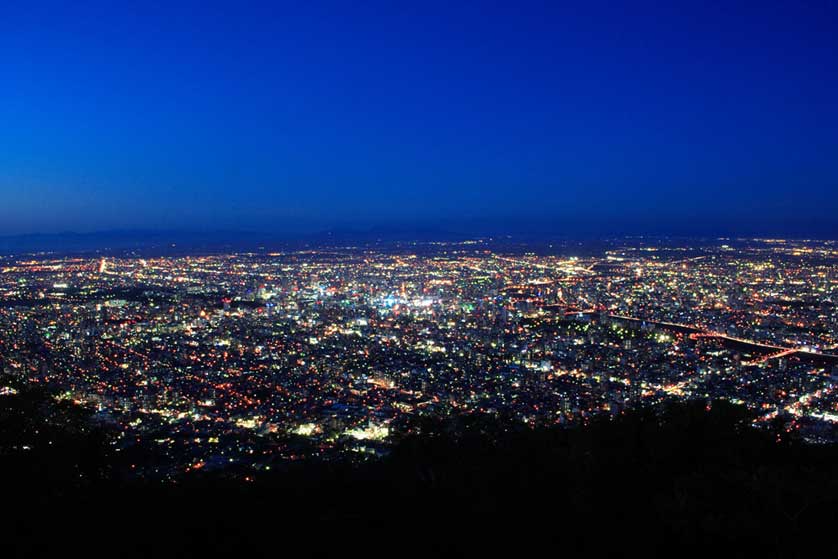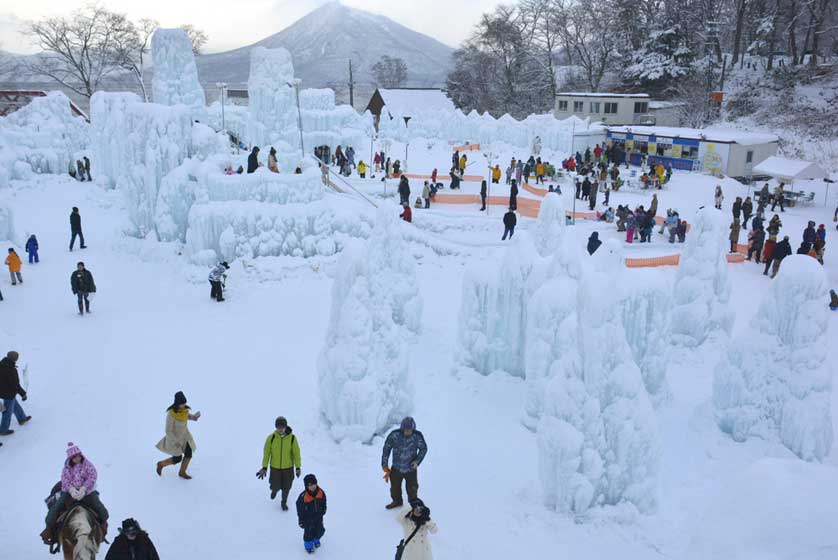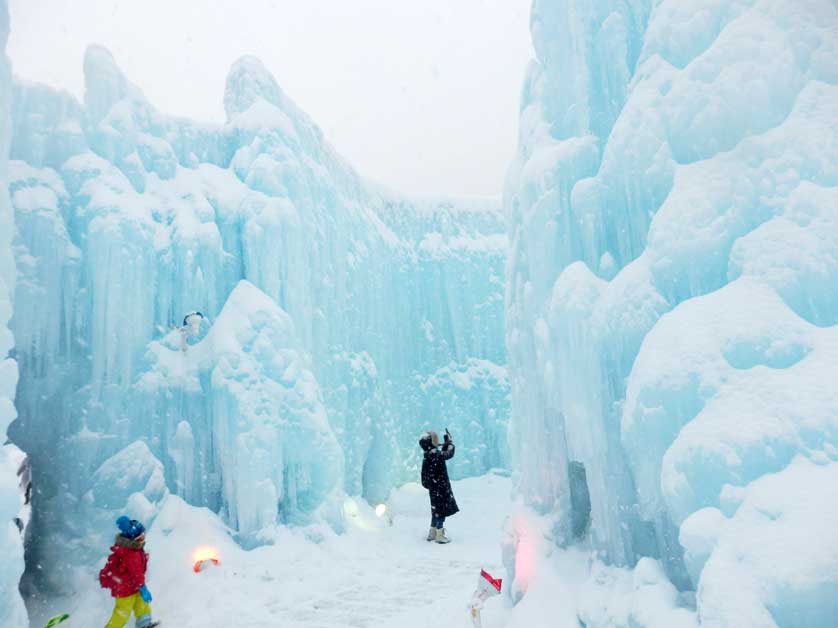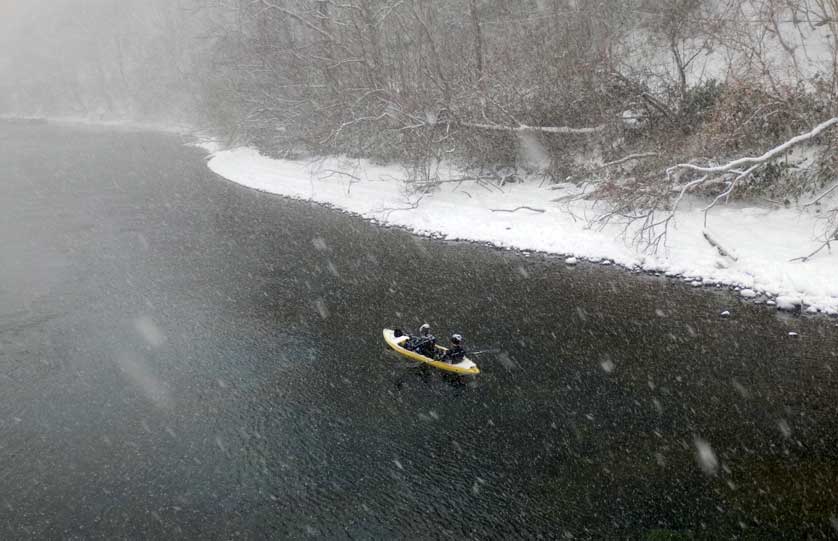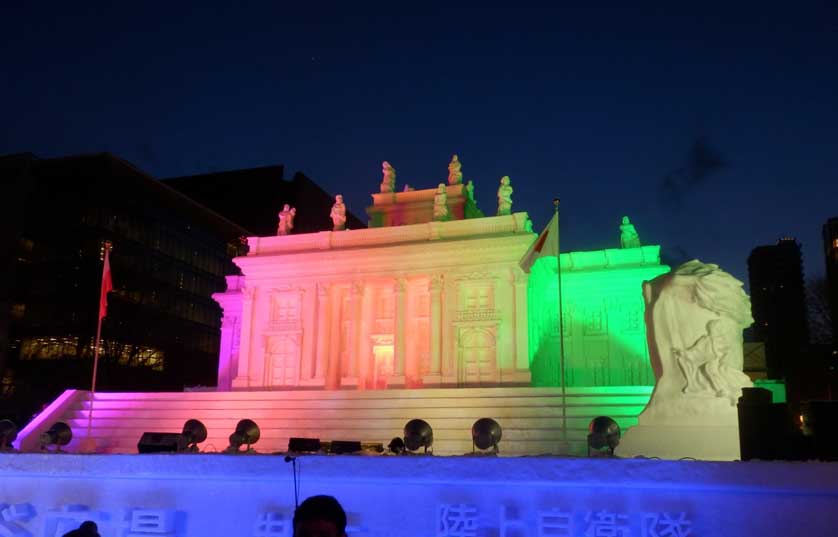-
地区
- 北海道
-
分类
- 地区
- 日本文化
- 活动
- 食物 / 美食
-
更新日期
- 2020-03-10
The Sapporo Olympic Winter Games in 1972 made the Sapporo Snow Festival famous worldwide. Started by a group of high school students as a small event in 1950, by now the festival receives about 2 million visitors per year, about the same amount of people as Sapporo has inhabitants.
The festival takes place in Odori Park, right in the center of Sapporo and in easy walking distance from JR Sapporo Station.
Odori Park runs a length of about 1.5 km, stretching from the Sapporo TV Tower (erected in 1957 and designed by Tachu Naito who also designed Tokyo Tower) to one of the historical landmark structures of the city, the Sapporo Shiryokan, a large museum inside the Former Sapporo Court of Appeals building.
During the Tokyo Olympic Games in 2020, Odori Park will serve both as start and finishing point for the Olympic Marathon.
Upopoy snow sculpture celebrating the heritage of Hokkaido's indigenous Ainu people at the Sapporo Snow Festival
Upopoy National Ainu Museum
From early to mid-February each year, the Snow Festival plays host to a wide variety of artfully created snow sculptures.
These include large and elaborated signature pieces like, say, an anniversary of Japan's diplomatic contact with a foreign country as well as other important topics of the year. Snow stages in front of those large pieces provide performance spaces for concerts and dance shows.
This year, the Ainu history and heritage of Hokkaido receives great attention at the Sapporo Snow Festival. The Ainu, a group of tribes quite distinct from Japanese people, populated Hokkaido for thousands of years. During the Meiji Period (1868 - 1912), the period of rapid industrialization, Japan annexed Hokkaido and forced the Ainu to assimilate into Japanese society. In the process, Ainu culture went almost extinct.
Today, Ainu culture, which is very different from Japanese culture, undergoes a great revitalization. On April 24th 2020, the Upopoy National Ainu Museum and Park, opens at the shore of Lake Poroto, about an hour from Sapporo.
A large snow sculpture at the 2020 Sapporo Snow Festival heralded the opening of this new national center for the revival and development of Ainu culture.
Address: 2 Chome-3-4 Wakakusacho, Shiraoi, Shiraoi District, Hokkaido 059-0902
Access: Suzuran Limited Express Train from JR Sapporo Station to Shiraoi Station. The trip takes about 65 minutes. The Upopoy National Ainu Museum is a short walk from Shiraoi Station.
Hours: TBA
Admission: TBA
Upopoy National Ainu Museum and Park English language website: ainu-upopoy.jp/en
Between those large pieces, you find an incredible number of smaller sculptures depicting anything from Japanese manga and anime characters to sports heroes to strange fantasy creatures.
Many of those latter works have been created by volunteer citizen groups and they often display a great sense of humor.
In case you get hungry, there are plenty of food stalls within Odori Park. Many of them offer traditional Hokkaido foods like Hokkaido Beef Soup, Barbecued Beef Tongue, Sea Urchin Rice and Squid Stuffed with Rice, along more conventional festival food like barbecued beef on a stick.
Wash your meal down with a Sapporo Classic Beer, a smooth tasty beer available only in Hokkaido.
Hokkaido Food on offer at the Sapporo Snow Festival
From 5 pm in the evening on, the major snow sculptures are colorfully illuminated. That's also the time for many of the live concerts and other events to start in front of the large sculptures.
Evening concert in front of an illuminated snow sculpture, Sapporo Snow Festival
Enjoy a free performance of a well-known Japanese singer or band while the snow sculpture in the background constantly changes its colors.
It's an amazing sight.
Festival time: Annually from early to mid-February
Address: Odori Park, central Sapporo
Access: Take the West Exit of JR Sapporo Station, walk down to the basement level. There starts the Sapporo Eki-mae underground walkway. Walk the underground walkway for about 10 minutes and you will arrive at Odori. Take Exit 5 and go up to ground level. There, you are right at the Sapporo Snow Festival site.
Alternatively, from JR Sapporo Station take the Namboku Subway Line to Odori Station (1 stop).
Hours: Odori Park is open 24 hours. From 5 pm to 10 pm, the snow sculptures are illuminated
Admission is free
Snow Festival English language website: www.snowfes.com/english
Sapporo Snow Festival Tour Packages
Sculptures at Susukino Ice World
Susukino Ice World
Susukino is Sapporo's most vibrant night live area. It's sometimes called the Shinjuku of Sapporo. Restaurants, bars and entertainment venues abound.
Susukino is in short walking distance from Odori Park and Susukino offers its own addition to the Snow Festival: Susukino Ice World.
At the Snow Festival in Odori Park, the sculptures are made of snow. At Susukino Ice World, they are made of ice.
Ice carving artists are given free reign here, resulting in a large variety of intricate sculptures, often with a maritime bent. From sea horses, jumping fish and mermaids to creatures that may only exist in the artist's imagination.
Festival time: Annually from early to mid February (identical to the period of the Sapporo Snow Festival)
Address: Nishi 4-chome Avenue between Minami 4 Jo-dori, and Minami 7 Jo-dori ( Ekimae-dori), Sapporo
Access: In short walking distance from Odori Park. Alternatively, take the Namboku Subway Line from JR Sapporo Station to Susukino Station (2 stops), use Exit 1.
Hours: Open 24 hours, from 5 pm to 11 pm, the sculptures are illuminated.
Admission is free.
Susukino Ice World English Language website
Vegetable Soup Curry at Suage Restaurant, Sapporo
Hokkaido Food
The area around Odori Park and nearby Susukino offers a large array of different cuisines. Japanese, Korean, Chinese, French, Italian and much more.
But this being Hokkaido, you might want to check out some real Hokkaido cooking - it offers dishes very different from the Japanese cuisine served in, say, the Tokyo area.
The perhaps most famous Hokkaido dish is Genghis Khan, barbecued mutton meat which you fry on a barbecue set built into your own table along with a variety of vegetables.
The dish is said to be based upon an old imagination of what Mongolians might eat. So, it's meat, meat and more meat. If you like meat, that's paradise.
Genghis Khan is served at many restaurants all over central Sapporo.
Soup Curry is another Hokkaido specialty. It's a hot curry soup you eat with rice. The curry soup is offered with many different ingredients, like, for example, large chunks of chicken.
The Garaku Restaurant in Susukino however has also a vegan vegetable soup curry on its menu, the Suage Restaurant, also in Susukino, a vegetarian soup curry (it includes an egg).
Hokkaido might be a place for meat, fish and seafood but alternatives for the diet-conscious are easy to find.
In recent years, a new trend developed in Susukino. After a night of copious eating and drinking, young people tend to go to stylish cafés, to enjoy a parfait and a coffee to finish off the night.
One of the most popular of those cafés is the Café Yue offering large and tasty chocolate parfaits, often shared by small groups of friends.
View down the Okurayama Ski Jump Stadium towards downtown Sapporo on a day with heavy snow clouds
Okurayama Ski Jump Stadium / Sapporo Olympic Museum
The Olympic Ski Jump Competition during the 1972 Sapporo Olympic Winter Games took place on Mount Okurayama on the western edge of the city.
The Okurayama Ski Jump Stadium is still used for national and international competitions as well as a training ground for Japanese ski jumpers.
Right next to the ski jump ramp is a ski lift with which you can ascend to the top of the mountain. From up there, you get a great view over the city right towards Sapporo TV Tower and Odori Park.
Pictures displayed show ski jumpers in mid-air. They seem to be flying right over to Odori Park. They didn't, of course, but the photos are impressive nonetheless.
If you want to get a feel of what it is like to ski down that ramp and fly through the air, head to the Sapporo Olympic Museum near the base of the ramp.
Interactive virtual ski jumping at the Sapporo Olympic Museum
There, you can put your feet into the ski of an interactive display. The screen in front of you shows your path down that ramp and your flying. Your body moves are monitored and after your successful landing, the length of the flight you would have achieved according to your body moves is displayed on the screen.
At another interactive installation, you can get in a cross-country ski race with your friends. Three persons can head through a wintery Hokkaido landscape unfolding on screen. The moves of your feet will determine your speed. Will you win this race?
The Sapporo Olympic Museum has much more to offer than just those interactive games.
It displays the history of the 1972 Sapporo Winter Games in detail. Did you know that Sapporo was already slated to host the Olympic Winter Games in 1940? Unfortunately, at that time, World War II led to the cancellation of the planned games.
Much historical gear is on display, too. Like geta, traditional wooden sandals, equipped with metal skids for ice skating.
The museum also features a Panoramic Theater showing exciting scenes of winter sports adventures.
Address: Okurayama Ski Jump Stadium, 1274 Miyanomori, Chuo-ku, Sapporo
Access: From JR Sapporo Station, take the Namboku Subway Line to Odori Station, change there to the Tozai Subway Line. Take the Tozai Line to Maruyama Koen Subway Station. From Exit 2, make your way to the Maruyama Bus Terminal. Take the No.14 bus (Araiyama Line) to Okurayama Kyogijyo Iriguchi Bus Stop (about 10 mins). The Sapporo Olympic Museum is approximately 10 mins walk from the bus stop.
Hours: April 28 - November 4: 9 am to 6 pm
November 5 - the following April 26: 9.30 am to 5 pm
Last admission 30 minutes before closing.
No closing day.
Admission: Adults: 600 yen / Groups (15 or more people): 540 yen / Junior high school students and under: Free of charge / 65 years old and over: 450 yen
Sapporo Olympic Museum English language website: sapporo-olympicmuseum.jp
Night view from Mount Moiwa (photo: Sapporo Tourist Association)
Mount Moiwa
Mount Moiwa, a short taxi ride from Mount Okurayama, is also a winter sports center featuring many ski slopes. Those are however used rather by enthusiastic Sapporo residents and visitors than by Olympic sports champions.
A ropeway leads up about two thirds of the mountain. There, you change into a mini cable car to reach the top.
The night view from Mount Moiwa (531 meters) has recently been voted as one of the top three night views of Japan. From there, you can overlook the whole of Sapporo with its brightly shining lights on a clear evening.
The top of the mountain offers the Jewel Restaurant for dinners overlooking the nightly city, a planetarium as well as a café.
As unique as the view over the city might be at night, it is a gorgeous view in the daytime as well, depending on the weather, of course.
Address: Fushimi 5-chome 3-7, Chuo-ku, Sapporo
Access: From JR Sapporo Station, take the Namboku Subway Line to Odori Station, change there to the Tozai Subway Line. Take the Tozai Subway Line to Maruyama Koen Station (the same station as for the Okurayama Ski Jump Stadium).
From Maruyama Koen Station, take the JR Hokkaido Bus (Junkan Maru 10/11) and get off at "Ropeway iriguchi" bus stop.
From there, the Ropeway station is in short walking distance.
The Okurayama Ski Jump Stadium and Mt. Moiwa are not far from each other. If you visit them on the same day, take a taxi from the Okurayama Ski Jump Stadium to the Mt. Moiwa Ropeway Station or vice versa.
Hours: Mt. Moiwa Ropeway
Summer Season: 10.30 am - 10 pm (last departure: 9.30 pm)
Winter Season: 11 am - 10 pm (last departure: 9.30 pm)
No closing day.
Admission: Ropeway + mini cable car (round trip): Adults 1.700 yen, children 850 yen
Mount Moiwa English Language website
Lake Shikotsu Ice Festival (photo: Sapporo Tourist Association)
Lake Shikotsu
Lake Shikotsu, a bit more than an hour away from central Sapporo, is one of Japan's largest volcanic crater lakes and with a maximum depth of 368 meters one of the deepest.
Due to its depth, the lake almost never freezes in winter. The same goes for the Chitose River which flows out of the lake towards the Sea of Japan.
The lake is far from any industrial site, its waters are unspoiled and extremely clear. On sunny days, the lake turns into a deep blue, reflecting the clear sky.
Lake Shikotsu is also famous for its delicious salmon trout. The fish are not native to the lake but when they were brought from Lake Akan in north-eastern Hokkaido in 1895, they soon developed a liking for the lake.
Today, the fish are served in a wide variety of dishes along the lake shore.
Lake Shikotsu Ice Festival
Lake Shikotsu Ice Festival (Hyoutou Festival)
Lake Shikotsu offers its own ice festival in winter. Clear water from Lake Shikotsu is sprayed over pre-arranged structures attached with wire nets. The result is an amazing ice landscape including many artificial ice caves worth exploring.
Festival time: Annually from late January to mid-February
Address: Lake Shikotsu hot springs, Chitose city
Access from Sapporo: Take a train from JR Sapporo Station to Chitose Station, from there, take a Chuo Bus #4, get off at the Shikotsuko stop.
Hours: 9 am to 10 pm, illuminated from 4.30 pm to 10 pm
Admission: Adults (middle school and older) 300 yen, children free
Lake Shikotsu Ice Festival English language website
Winter Kayaking on the Chitose River near Lake Shikotsu
Winter Kayaking
If you want to make your visit to Lake Shikotsu really exciting, head for the Ocean Days store. Ocean Days offers kayaking tours on Lake Shikotsu and Chitose River – even in mid-winter.
They dress you up in a neoprene dry suit and take you to a kayak tour you will never forget. You get to paddling out onto the lake, you get to paddle down Chitose River. The tour guide will frequently call out underwater attractions visible through the glass bottom of the boat or by a look over board. Seaweed fields many meters below the surface, fallen trees resting on the bottom of the river, bizarrely shaped stones.
The clear waters make all that mysterious underwater world clearly visible.
Though you never feel cold on the trip thanks to the neoprene suit, it's still a very wintery exercise. The hot tea served at the headquarters of Ocean Days after you get out of the suit just comes right.
You are on a winter trip, after all, with snow piling up on a good day.
Address: Bangaichi, Shikotsuko Onsen, Chitose-shi, Hokkaido 066-0281
Access: Access from Sapporo: Take a train from JR Sapporo Station to Chitose Station, from there, take a Chuo Bus #4, get off at the Shikotsuko stop.
For tour times and prices please see the Ocean Days website. Ocean Days English language website.
Sample Itinerary
All places / activities described in this text can be enjoyed within two days.
A sample itinerary for an individual trip might be:
Day 1: Arrival at New Chitose Airport in the morning, take bus from the airport to Lake Shikotsu, see the Lake Shikotsu Ice Festival, go on a kayak tour with Ocean Days at Lake Shikotsu, take bus to Chitose Station, then train to JR Sapporo Station. In Sapporo, see the illuminated Snow Festival and Susukino Ice World or go to Mt. Moiwa for the night view.
Day 2: Visit Snow Festival and Susukino Ice World in the morning, then go to Okurayama Ski Jump Stadium / the Sapporo Olympic Museum. Perhaps visit Mt. Moiwa at that time (it's close to Okurayama) and head back for central Sapporo for the illuminated Snow Festival / Susukino Ice World.
In the evening, take train back from JR Sapporo Station to New Chitose Airport.
Many variations of this itinerary are possible but please keep in mind that it takes quite some time to get to Lake Shikotsu and to enjoy the kayaking or other activities there.
Illuminated snow sculpture, Sapporo Snow Festival
Access to Sapporo
Please find detailed information on how to get to Sapporo by airplane, train, bus and ferry as well as information on public transport within Sapporo on our Sapporo travel page.
Voyagin Tours
Tokyo-based travel agency Voyagin offers English-language guided tours to the Sapporo Snow Festival. Click here for detailed information
